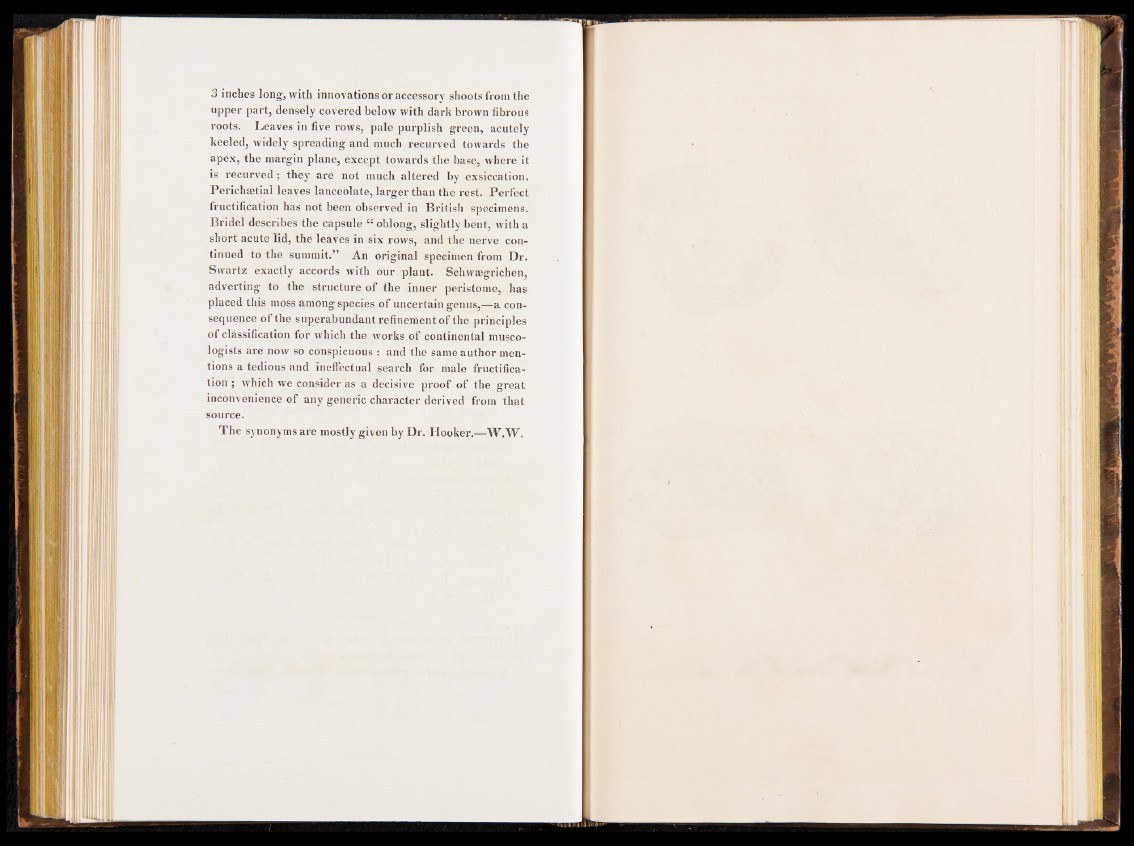
3 inches long, with innovations or accessory shoots from the
upper part, densely covered below with dark brown fibrous
roots. Leaves in five rows, pale purplish green, acutely
keeled, widely spreading and much recurved towards the
apex, the margin plane, except towards the base, where it
is recurved ; they are not much altered by exsiccation.
Perichætial leaves lanceolate, larger than the rest. Perfect
fructification has not been observed in British specimens.
Bridel describes the capsule “ oblong, slightly bent, with a
short acute lid, the leaves in six rows, and the nerve continued
to the summit.” An original specimen from Dr.
Swartz exactly accords with our plant. Schwægrichen,
adverting to the structure of the inner peristome, has
placed this moss among species of uncertain genus,—a consequence
of the superabundant refinement of the principles
of classification for which the works of continental museologists
are now so conspicuous : and the same author mentions
a tedious and ineffectual search for male fructification
; which we consider as a decisive proof of the great
inconvenience of any generic character derived from that
source.
The synonyms are mostly given by Dr. Hooker.—W.W.